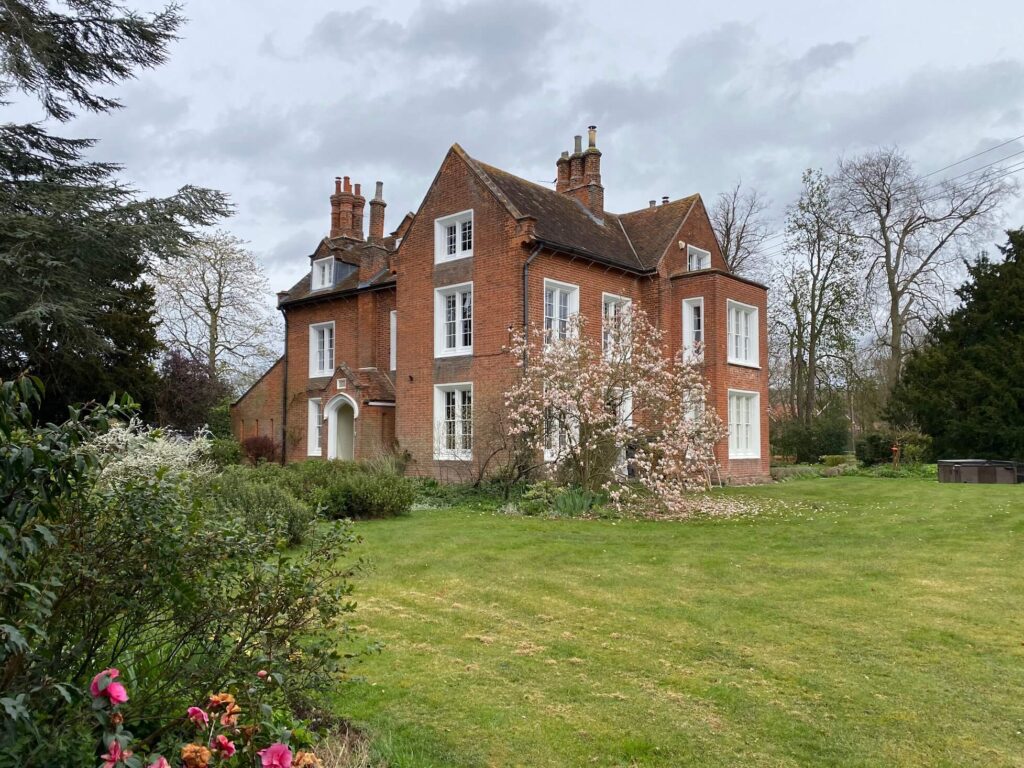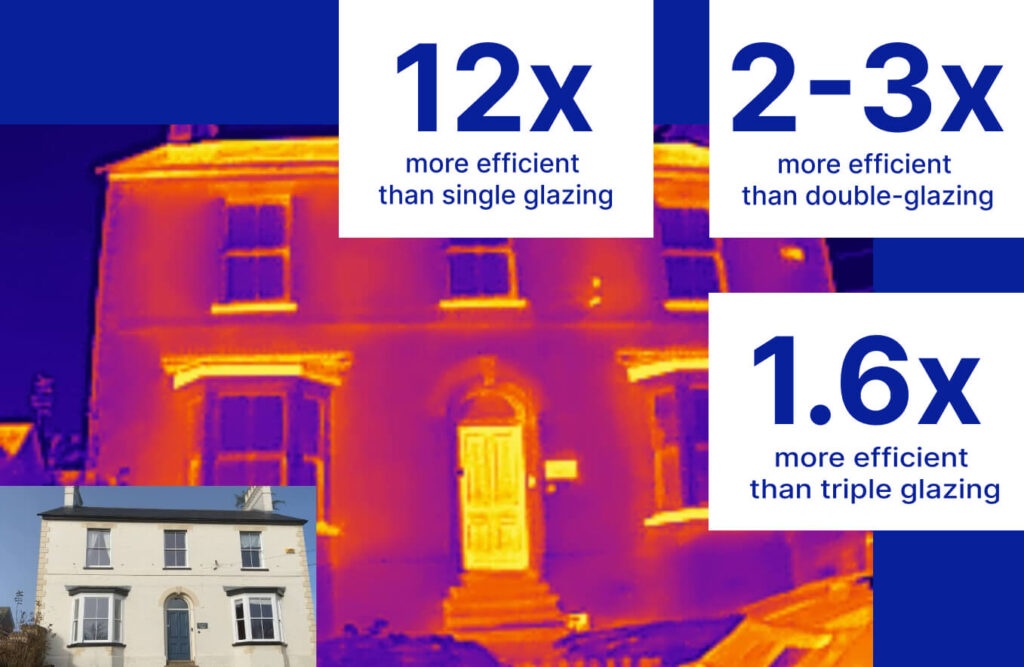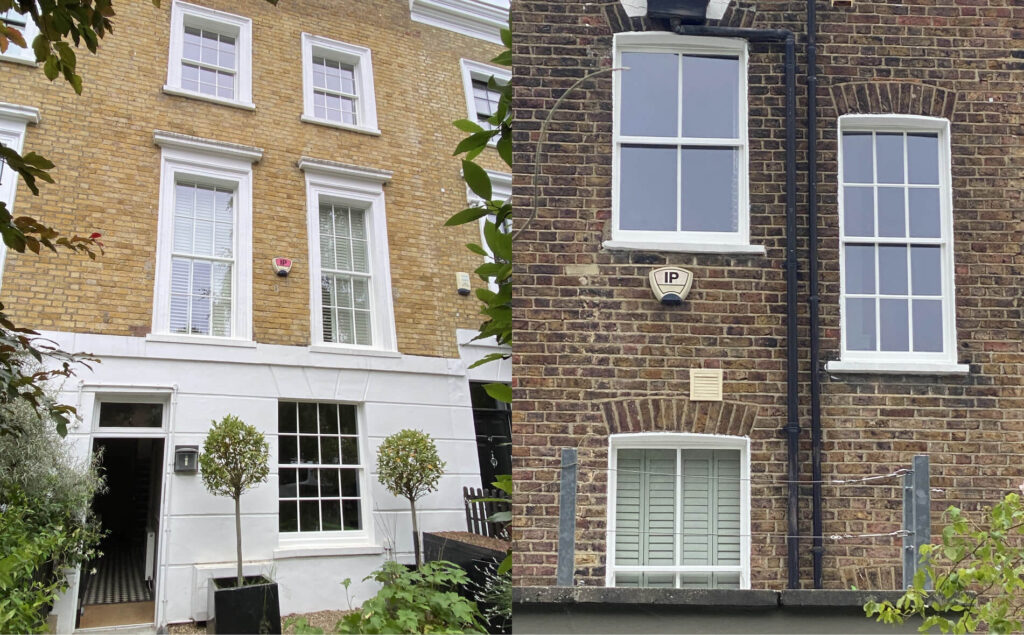
Home Sash window soundproofing
Sash window soundproofing – Glass is a key
Live a healthier life with sound-proofed windows:
- Better sleep;
- Lower stress;
- Improve productivity and concentration.

Soundproofing sash windows is a great way of reducing external noise entering your home. There are many different options for soundproofing your wooden windows, though.
Choosing the right way to soundproof your sash windows can be confusing because of the many options available; here are the main ones:
- New sound-proofed windows
- Reglazing your current windows with acoustic glass – That’s where we can help ✅
- Install secondary glazing
How to measure external noise levels yourself
Now, to understand just how much external noise is entering your home, you may wish to test the noise levels yourself. All you need for this is a digital sound level meter. For the most accurate results, you’ll need to take a few readings at different times of the day.
Firstly, you’ll want to test the noise levels outside. This will help you determine how much of this noise is entering your home.
Stand as close to the windows you are concerned about as possible. Take this reading multiple times. If you live on a busy street, try and take a reading when it is quiet (this will be your control test) and during the loudest/busiest parts of the day.
Then, repeat the tests inside your home and measure the difference in volume. This will give you a clear indication of just how much noise is coming through your windows and into your home.
From there, you can take steps to reduce the noise.
The theory behind Sash window Soundproofing
By soundproofing your windows, you can eliminate a large amount of noise coming into your property from the outside.
But how does sash window soundproofing work?
Well, this is quite a complex window topic, but it all starts with how sound waves travel through the air.

Sound waves
Sound is a type of energy. It is made by vibrations. Whenever an object vibrates, it causes movement in particles in the air which then disrupts other particles, which then disrupts more, and so on.
This is the sound wave. The sound wave keeps moving until the particles run out of energy.
One way these particles lose energy is by hitting other objects. Objects like your window.
The glass helps reduce noise
So, the glass in your window does help to reduce the noise from external sources. As we’re sure, the tests above have shown you. However, a single pane of glass cannot stop that much energy, so the particles creating the sound wave will affect other particles of air on the inside of your window and continue the sound wave into your home.
So, the theory behind soundproofing a sash window is to add more panes of glass. Doing this stops more of the energy of the sound wave meaning that the noise coming into your home is reduced.
Soundproofing in this way works extremely well, and there are many different ways of adding panes of glass to a sash window, with popular methods being secondary glazing and retrofitting double glazing.
We recommend retrofitting double glazing into your sash windows, though. The chart below shows how different window glazing options can reduce the noise coming into your home.
And double and triple glazing with acoustic laminations is the best option. The numbers on the right side show the reduction possible (in decibels) when each type of glass is fitted.
Single glazed windows?
- Upgrade existing sashes with double glazing units
- Stop heat-loss and draughts
- Suitable for Listed Buildings
- Reduce external noise
How does the acoustic glass work?
So, as we learned above, sound waves are a type of energy. When this energy hits an object, it is disrupted, and acoustic glass uses this idea to its advantage.
Acoustic glass is made up of multiple laminations or layers. Each of these layers is an additional blockade the sound wave must get through to get into your home.
A single piece of glass is a bit like one shopping trolley blocking the aisle in a supermarket.
It’s a bit inconvenient, but not going to stop you from taking your trolley to the bread. But what about two or three trolleys?
Suddenly getting down the aisle is nearly impossible. And if you can, you’ll need to leave your trolley behind to get what you want.
In this supermarket situation, you and your trolley are the sound waves, and the other trolleys are the laminated glass panes. By adding more panes of glass, the sound waves hit these, run out of energy, and don’t pass into your home.
More panes of glass in the laminations mean the sound waves lose more energy as they try to pass through your window, so less sound enters your home.
What is a healthy level of noise?
Forty decibels or lower is considered a healthy level of noise in the home. Anything above sixty decibels can affect your quality of life and sleep patterns and should be solved quickly.
While single-paned sash windows are not the only cause of external noise entering your home, they are one of the more problematic areas of the home.
Solving sound issues with your windows can reduce the noise entering your home quite considerably and enough to get the noise level well below sixty decibels.
Sound reduction properties of different window frame materials
Timber window frames
Timber window frames do a good job of reducing noise levels, although they must be treated or painted to work effectively.
Engineered wood (wood with multiple layers) also works better at reducing noise in the home too.
This is because the multiple layers act like the laminations in the acoustic glass.
uPVC window frames
uPVC is fairly comparable to a standard timber window frame in reducing the noise in the home. However, sound can travel through uPVC quite easily because of the hollow frame construction.
So, even if you installed triple glazing with acoustic laminations, you won’t reduce the noise in your home completely because of the frame.
Aluminium window frames
Aluminium frames are actually the worst of all three for reducing the noise entering your home unless it is aluminium-clad windows with solid timber inside the frame.
This is largely due to the hollow frames, like uPVC window frames.
Professional sash window soundproofing services
Our company offer a reglazing service which comes with many benefits, including improved sound reduction properties.
An original wooden window, whether a sash or casement window, will likely need restoration before reglazing. We do the reglazing together with sash windows restoration and draught-proofing.
Glazing upgrade
While your original window can prevent some of the noise from outside your home from entering it, it can’t do the job very effectively. So, upgrading the glazing is the best option for you.
A new glazed unit, like slimline double glazing, is a fantastic way of reducing the noise in your home. And for many, it is the perfect solution for improving noise levels and the thermal efficiency of their home.
Thicknesses of double glazing do play a role in reducing outside noise.
How much can noise reduction be reduced?
Traditional windows can reduce the amount of noise coming into your home by around 26-30dB. So your current windows (if they are in good condition) are doing some good work.
The standard vacuum-sealed double glazing we use in our retrofits can reduce the noise level by 36dB.
Acoustic sash windows, though (this is vacuum-sealed double glazing with laminations), can reduce noise levels from outside as much as 43-51dB.
The balance between energy efficiency and sound performance
Acoustic insulation and thermal insulation are not the same things. And in many reglazing sash window projects, a fine balance needs to be found between the two.
Ideally, you would like to have fantastic acoustic insulation and thermal insulation, but this isn’t always possible to achieve in restoration projects unless you replace your windows with triple-glazed acoustic windows.
Vacuum glazing is a well-balanced option that gives you the best of both worlds.
The laminations create a barrier for the sound, and the vacuum creates a barrier to protect against thermal changes whilst also helping reduce the noise too.
Other options to reduce external noise pollution
There are several noise-reducing options open to you when it comes to the windows in your home.
The options you have for your windows, though, include the following:
Modern window with double laminated triple glazing
These are what are known as soundproof windows. They usually have thick frames designed for triple gazing.
This type of modern window offers a 51dB reduction in noise. These are one of the best noise-reducing glazing units on the market and are certainly the way for a modern home.
For period properties with original sash windows, they are not the best choice. And if your home is listed, it likely won’t be possible to install these anyway.
You also only need this level of noise reduction if you live close to the runway of Heathrow Airport or close to the busy city train station or the M11 highway.
Secondary glazing
Now, secondary glazing can help to reduce the noise entering your home, but sadly, not as much as many people hope.
These windows do not change the exterior of your home, of course, but do make opening your window a two-step process and mean you’ll lose the use of your window sill too.
A secondary glazing unit with acoustic laminated glass can reduce the noise in your home by about 37dB.
Our projects

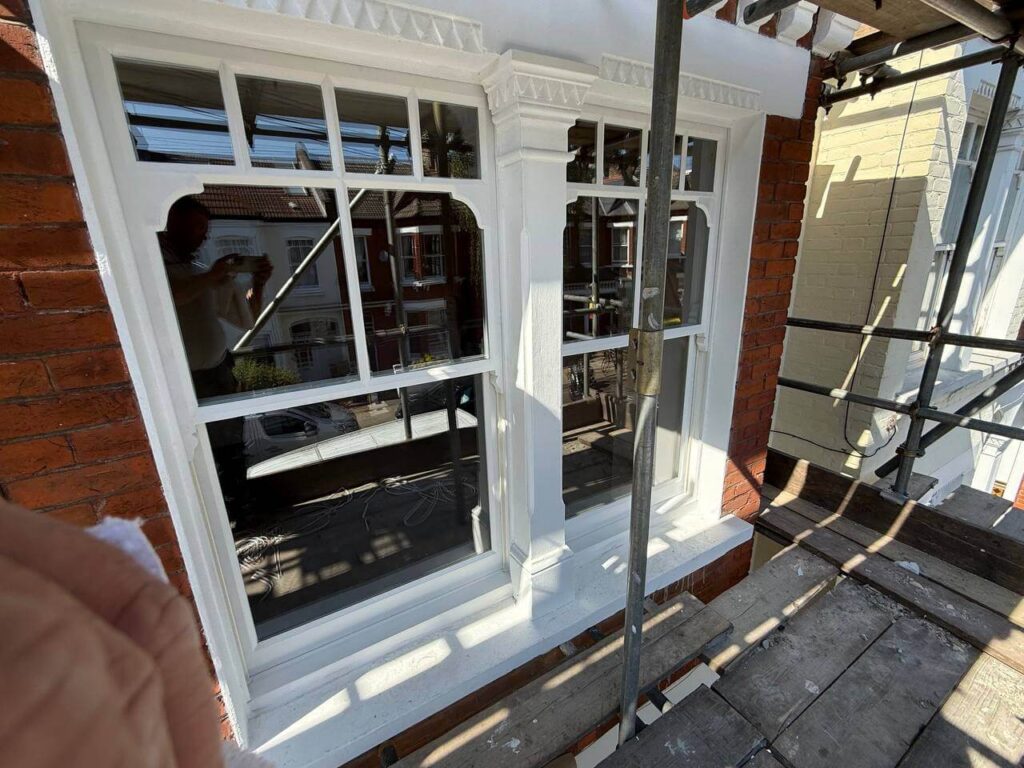
Edwardian sash windows reglazing
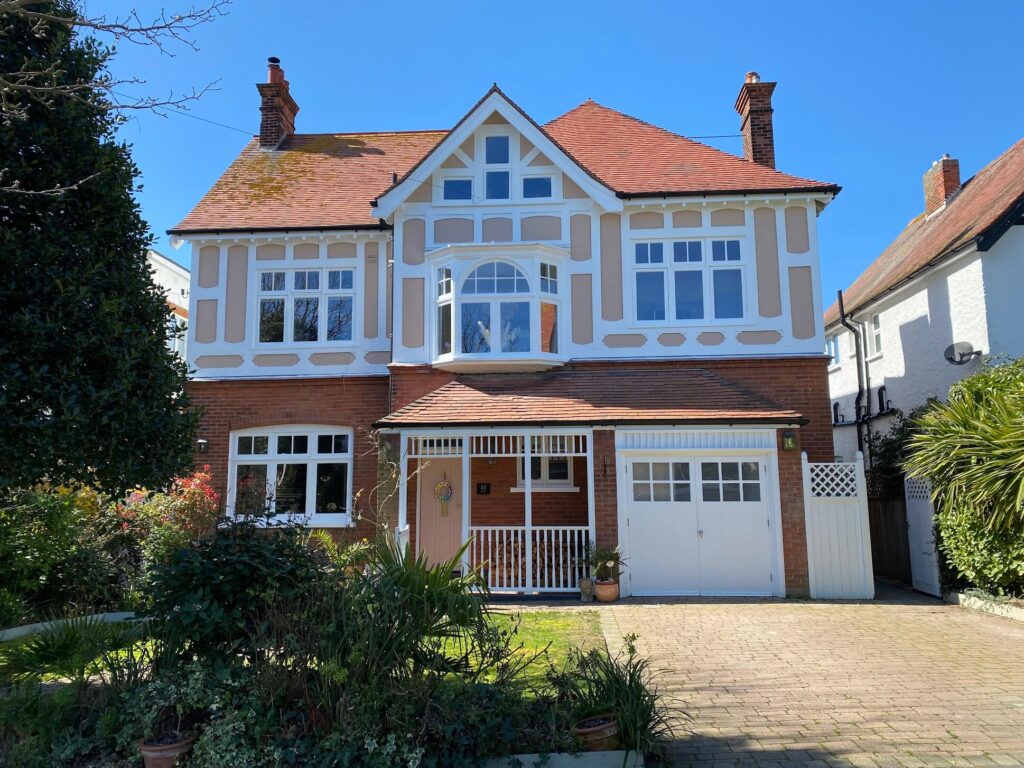
Wooden windows double glazing in Frinton-on-Sea

Sash windows restoration in West Essex

Double glazing Listed Grade 2 building
